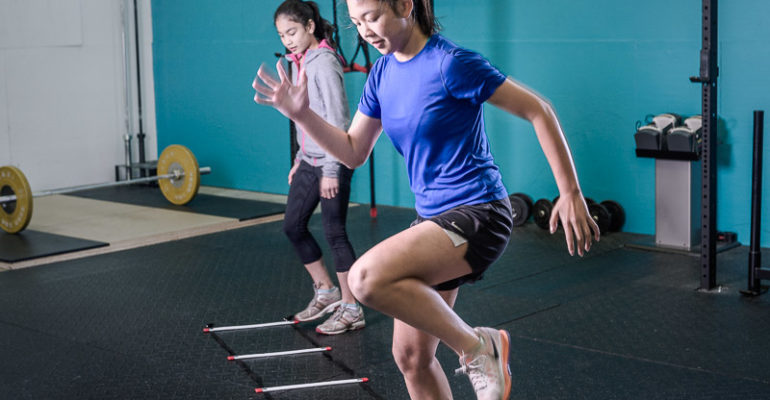If you’re like many people who workout, you usually have a clearly defined goal or many goals. Sometimes too many. Perhaps you’ve done the bodybuilding thing or the long distance running thing but in either case you didn’t reach the goals you wanted to achieve and/or sustained an injury, which halted your progress. If you are still confused then think about training like an athlete.
What does that mean? What does that mean to you? It does NOT mean that you should play sport everyday or almost everyday. It means that you will base your training on movements and performance enhancement, not muscle groups and getting your butt kicked every time. Today’s athlete trains to improve performance, prevent injury and promote recovery/regeneration and so should you, to an extent, especially if you want to continue “exercising” for years to come. As you already know, many people end up beating up their bodies and getting injured repeatedly sometimes to the point of quiting altogether.
In a previous blog article from a few years ago, “Train Like a Fighter”, I mentioned that having many physical qualities including strength, power, speed and endurance. However, the article did not mention quality of movement, mobility and stability, recovery and injury prevention. And since those aspects were not present, injuries could easily occur even with a seemingly well-balanced program. For example, for squats and deadlifts are great exercises for increasing strength and, potentially, performance in sports/activities but doing them with incorrect technique could be a recipe for injuries, often bad ones. So in this blog series, which will be released over the next few months, I will list my top suggestions for training like an athlete or in an athletic-focused way.
– Learn and practice quality movement on a regular basis
– Understand the importance of and practice recovery/regeneration
– Choose training goal(s) and rotate periodically
– Injury prevention via proper training and corrective exercise
– Knowing when to vary training intensity
Learn and practice quality movement on a regular basis
You have all heard that keeping active and moving is important, especially as one gets ages. This is true but there one very important thing missing; quality movement. There are many of people who move plenty in life and in gym or outdoors, however, their quality of movement is less than optimal or sometimes just awful. So what does quality of movement entail? Firstly, correct posture. In general, keeping the spine neutral, including the head, and joints in proper alignment while in motion. Once proper posture is established, correct movement can begin. the concept of movement can be very difficult to explain on paper but basically if the movement looks correct and/or athletic it probably is. If it doesn’t look correct or athletic it most likely is not.
In the weight room, movements tend to be much more controlled and deliberate than when outdoor training or during sport practice. in reality, it is probably more important from a safety standpoint that movements be correct since working with heavy or even moderate loads with poor technique/movement can not only increase the chance of injury but also the severity of injury due to the increased load and stress on the soft tissue and joints. Some very common but incorrectly performed exercises in both the weight room and outdoors is the push-up, the lunge and squat. The very exercises which are helping you get stronger and seemingly fitter, may actually be harming you from a muscle and joint perspective with improper technique.
The push-up may be the most well-known exercise known to man because it is “easy” to perform and requires no equipment but it is probably the most butchered of all exercises I have seen in my years as a trainer and coach. From the head poking to the bums to the air, I’ve seen it all. It is actually, not an “easy” movement to perform correctly and there many details of the push-up that cannot be shown in a picture.
PUSH-UP WITH POOR FORM
PUSH-UP WITH GOOD FORM
So please, as a favour to me, do your push-ups with good form to promote proper development of the pushing muscles of the upper body and not the incorrect ones (overuse of upper trapezius and neck muscles), which could lead to muscular imbalances and even injury, cumulative or acute. AS A RULE, PLEASE DO ALL YOUR MOVEMENTS CORRECTLY, IF POSSIBLE!



